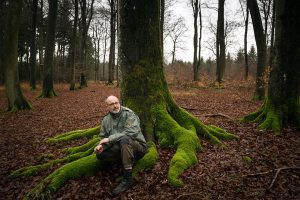
A recent New York Times article by Sally McGrane discusses the ecology put forth by German forester Peter Wohlleben in his recent book The Hidden Life of Trees: What They Feel, How They Communicate — Discoveries From a Secret World. Wohlleben’s writing is marked by the use of emotive language – e.g. “trees suckle their children” – to discuss the relationships of forest flora. His style of writing may be evocative, but Wholleben’s ideas are not novel. The book popularizes what environmental scientists have know for some time – that trees negotiate cohabitation through a system of chemicals, roots, and symbiotes that constitute what Wholleben terms the “wood wide web”. Paying attention to these networks might help us change the way we manage forests as a natural resource. Wholleben also hopes it will affect the way conceptualize nature in general if we see the complex communities of individuals rather than stands of ‘oxygen producing robots.’
Read the full article here: http://mobile.nytimes.com/2016/01/30/world/europe/german-forest-ranger-finds-that-trees-have-social-networks-too.html?hp&action=click&pgtype=Homepage&clickSource=story-heading&module=photo-spot-region®ion=top-news&WT.nav=top-news&_r=1&referer
